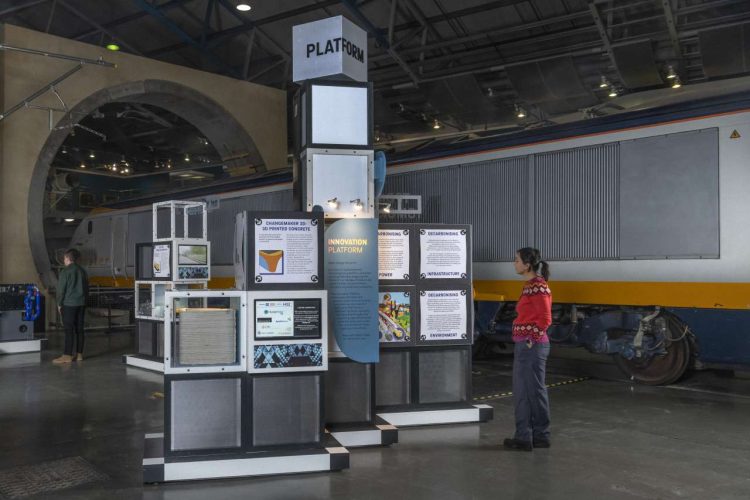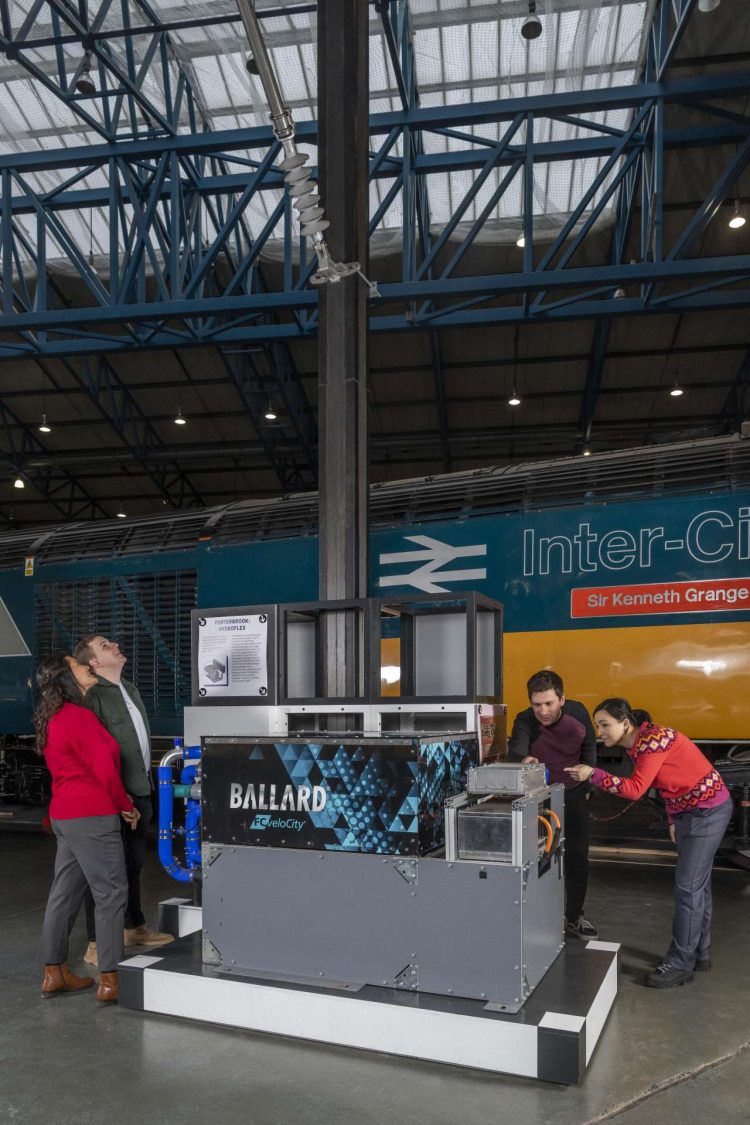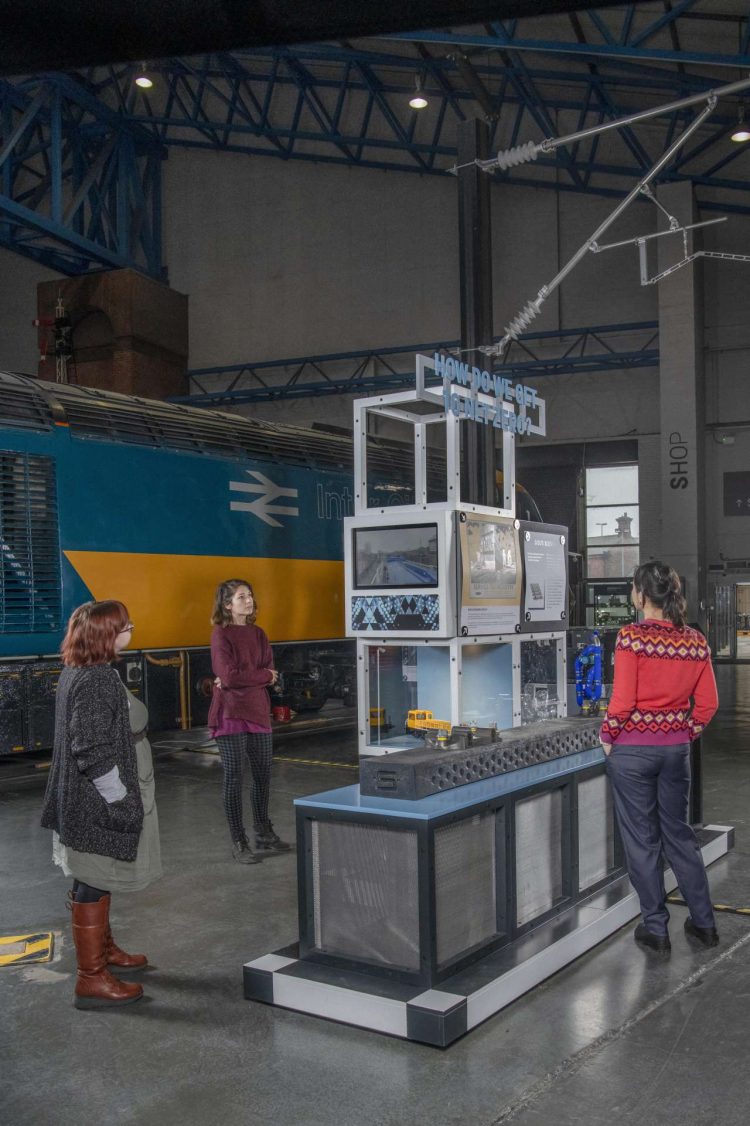The National Railway Museum 2023 season has opened with an exhibition that focusses on decarbonisation, and forms part of its Innovation Platform exhibition that highlights technology that could benefit Britain’s railways,
The exhibition runs until June and displays seven technological objects that could make Britain’s railways greener and contribute to the rail industry achieving net zero ahead of the UK Government’s target of 2050. On display are:
- a hydrogen fuel cell from the UK’s first hydrogen-powered train;
- an overhead railway line mast made from composite materials;
- a 3D-model of an emission-free hybrid battery shunting locomotive;
- lightweight sleepers made from recycled plastic;
- low-carbon 3D-printed concrete;
- photovoltaic solar film;
- lineside monitoring software that makes use of artificial intelligence (AI).

The Decarbonisation exhibition is being staged in the museum’s Great Hall alongside Eurostar and InterCity 125 power cars and follows on from an Autonomous Technology exhibition. For the exhibition season the museum has partnered with organisations such as Furrer+Frey, Porterbrook, Network Rail, and many others to display technology they have developed. After the closure of the Decarbonisation exhibition in June, a Smart Cities exhibition will run until December, followed by a Communities exhibition until May 2024.
To minimise the use of new materials, the structure for the museum’s existing Innovation Platform from the previous season has been reused and reconfigured. It will also be used in the final two seasons of the exhibition, and has been designed so that it still has a use after the exhibition closes. Further details about the Innovation Platform can be found online at www.railwaymuseum.org.uk/whats-on/innovation-platform.

As part of the museum’s Autonomous Technology season, Prometheus Drone went on display at Locomotion, Shildon from Wednesday, 11th January. The drone allows inspection in very tight spaces under railways to ensure that the ground is stable in areas previously used for coal mining, and avoids the need to expose people to risk from falls, structural collapse, and other hazards.

Cassi Roberts, Exhibition Project Manager at the National Railway Museum, said: “Decarbonisation is such an important word in our world right now and we are delighted that we can showcase seven objects at the National Railway Museum that could help our railways become greener and more sustainable.
“Visitors will have the chance to learn a little more about how these objects work and the benefits they bring in comparison to alternative materials currently being used in the rail industry that may be higher in carbon or more energy intensive.”
Jo Lewington, Chief Environment & Sustainability Officer at Network Rail, said: “We’re thrilled that the National Railway Museum is highlighting the great work happening in our industry to try and decarbonise our railways.
“At Network Rail, we’re proud to help develop some of the technology that will be on display such as the AI lineside monitoring software that will help us protect rare plant species and animal habitats, as well as identifying opportunities to store carbon in the future based on current carbon stores. We also approved the use of composite railway sleepers made from recycled plastic that could deliver a reduction of up to 70,000kg of CO2 per kilometre.”






Responses